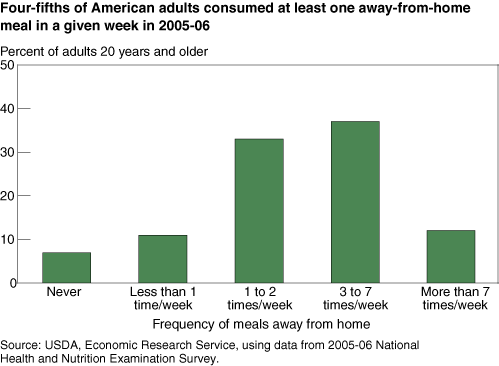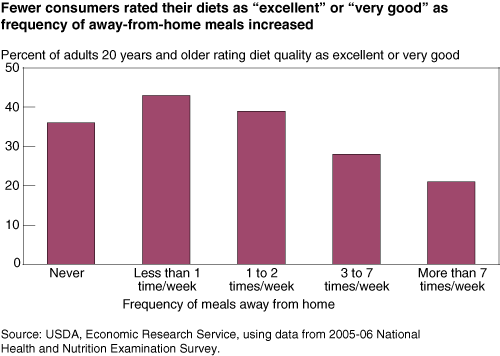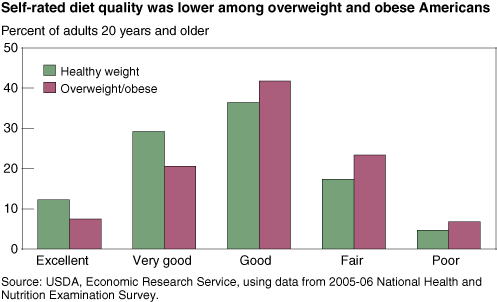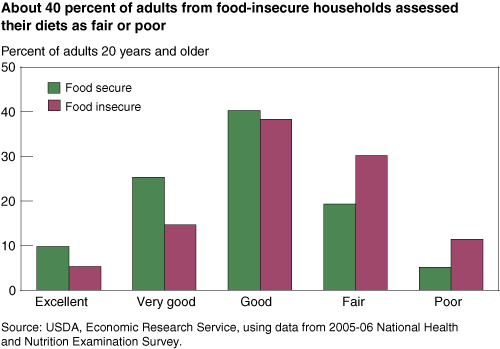Tracking Changes in Dietary Awareness and Food Choices
- by Jay Variyam and Travis A. Smith
- 6/1/2010
A number of constituencies—government nutrition and health agencies, food manufacturers, public health advocates, and food marketing firms—depend on reliable data to track changes in the food habits, attitudes, and choices of U.S. consumers. ERS has partnered with the National Center for Health Statistics (NCHS) to gather such data. The first set of findings from this collaborative effort is already providing insights into shifting consumer behaviors.
Since 2007, ERS has fielded a consumer behavior module called the Flexible Consumer Behavior Survey (FCBS) as part of the NCHS’s National Health and Nutrition Examination Survey (NHANES). NHANES collects a variety of health data on the U.S. population through interviews and medical exams conducted at mobile examination centers. NHANES also gathers information on what people eat using 24-hour dietary recalls, making it possible to link eating habits to health conditions such as obesity, diabetes, and hypertension. And, because the survey sample is representative of the U.S. population, the survey results indicate national trends.
The FCBS module consists of a household interview and a followup telephone interview administered after respondents complete their NHANES dietary recall. While the household interview questions do not change over time, the telephone interview is flexible, consisting of questions that will be fielded for 2 to 4 years and then replaced with new topical questions.
The first round of the FCBS module was administered in 2007-08, with a second round included as part of the 2009-10 NHANES. The two cycles of the FCBS module collect information on areas such as participation in food and nutrition assistance programs, family food expenditures at home and away, nutrition knowledge, use of food labels and nutrition information, and the importance to consumers of factors such as price, convenience, and taste while grocery shopping and dining out.
The 2005-06 NHANES contained a subset of questions from the FCBS, and the data are available for public use at the NCHS website (www.cdc.gov/nchs). ERS analysis of these data indicates that consumer use of nutrition labels declined from 1995-96 to 2005-06, particularly among younger adults who came of age after the labels became mandatory.
To gain a better understanding of how frequently people eat out and the consequences of those choices, the FCBS contains a question about the number of away-from-home meals eaten. Seven percent of adults reported eating no meals prepared away from home in 2005-06, while 12 percent ate more than seven away-from-home meals per week.
Dietary intake data reveal that foods prepared away from home tend to be more calorie-dense and of lower nutritional quality, on average, than foods prepared at home. The 2005-06 data show that people who dined out more frequently seem to be aware of the fact. Only 21 percent of those who ate more than seven away-from-home meals per week rated their overall diet quality as excellent or very good, compared with 43 percent who ate out less than once per week.
There appears to be a link between frequency of eating meals out and being overweight or obese. Almost 70 percent of respondents who ate three or more away-from-home meals per week were overweight, compared with 61 percent who ate less than one away-from-home meal per week. Additionally, those who were overweight or obese had a lower self-rated diet quality than Americans of healthy weight.
This article is drawn from:
- Diet Quality & Nutrition. (n.d.). U.S. Department of Agriculture, Economic Research Service.
- Variyam, J. & Smith, T. (2010, March 1). Americans Are More Realistic About the Quality of Their Diets. Amber Waves, U.S. Department of Agriculture, Economic Research Service.
- Todd, J.E. & Variyam, J. (2008). The Decline in Consumer Use of Food Nutrition Labels, 1995-2006. U.S. Department of Agriculture, Economic Research Service. ERR-63.





